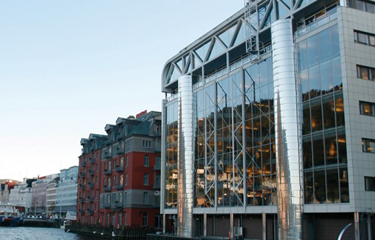Grieg Seafood Group (GSF) is looking to sell off its main Scottish salmon farming operations in the Shetland Islands, having already decided to cease production at its five sites on the Isle of Skye after its current cycle.
Bergen, Norway-headquartered GSF confirmed its decision to divest its Shetland assets alongside the delivery of its third-quarter 2020 results, which saw the group heavily impacted by the impacts of the coronavirus pandemic in all key markets as well as operational challenges, which caused farming costs to increase compared with the same quarter last year.
GSF CEO Andreas Kvame said that Grieg expects a strong market once the COVID-19 is under control, and that in the medium- to long-term, the focus will be in the areas with the best potential for sustainable growth during the post recovery period; namely, its Norwegian and Canadian regions.
“As such, we have initiated an evaluation of strategic alternatives for our Shetland region. We aim for a sale when the timing is right,” Kvame said.
Its Shetland region harvested 6,785 metric tons (MT) in the last quarter, up from 3,856 MT in Q3 2019. However, its losses before interest and taxes (EBIT) further reduced from NOK 3.53 (USD 0.39, EUR 0.33) to NOK 27.44 (USD 3.03, EUR 2.56).
Its earnings were impacted by low market prices and a low price achievement on small fish from an accelerated harvest due to high mortality caused by jellyfish in the water surrounding Skye. This caused a writedown of biomass of NOK 90 million (USD 10 million, EUR 8.4 million), with a total writedown for Grieg Seafood Shetland of NOK 100 million (USD 11.1 million, EUR 9.3 million) in the quarter.
According to its latest results statement, GSF’s total harvest in the three-month period amounted to 21,201 MT, up slightly on Q3 2019, while its sales revenues slipped by 5 percent or NOK 64.7 million (USD 7.2 million, EUR 6 million) to just over NOK 1.26 billion (USD 139.3 million, EUR 117.4 million). Its losses before fair value adjustment of biomass of NOK 191.6 million (USD 21.2 million, EUR 17.8 million) equated to a NOK 334.3 million (USD 36.9 million, EUR 31.1 million) reversal on Q3 2019, and corresponded to an loss per kilogram of NOK 9.04 (USD 1.00, EUR 0.84), down from an EBIT of NOK 6.78 (USD 0.75, EUR 0.63).
Commenting on the Q3 performance, Kvame conceded that the third quarter had been challenging for Grieg.
“Effects of the COVID-19 impacted price achievements negatively in all markets and we experienced operational challenges out of the ordinary on Isle of Skye. On the other hand, our Norwegian regions delivered good results in the quarter. Progress is made at our recently acquired greenfield project in Newfoundland, and healthy fish are growing in our new hatchery,” Kvame said.
However, to lower risk in the initial phase of the Newfoundland project, the group has decided to defer the construction of the first post-smolt unit to 2023. This won’t delay the firm's target of harvesting 15,000 MT by 2025, Kvame said.
“In 2020, we have not been able to deliver on our ambitions," Kvame said. " Grieg Seafood has a clear goal of creating value and we are taking decisive action and implementing measures to improve our performance the coming years. We will reduce cost per unit in all regions supported by cost-effective and sustainable farming methods and profitably grow our salmon production by around 45 percent towards 2025."
GSF expects its harvest volume in Q4 2020 to be 26,500 MT, with Rogaland producing 6,490 MT, Finnmark 14,160 MT, Shetland: 2,390 MT and British Columbia (BC) 3,480 MT.
“Through organic initiatives, we target 100,000 MT harvest (excluding Shetland) in 2022 with an average farming cost for the Norwegian operations below NOK 40 (USD 4.42, EUR 3.72) per kilogram and CAD 7 (USD 0.77, EUR 0.65) per kilo in B.C. For 2025, we target 130,000 MT of harvest and continued reduced cost per kilogram. A potential sale of Shetland will significantly lower our overall production costs per unit,” Kvame said.
GSF estimates that the global supply of Atlantic salmon for 2020 will increase by approximately 2 to 3 percent compared to last year. With limited increase in the harvest volume, high prices would normally be expected, it said, but the market situation has been significantly impacted by the COVID-19 pandemic. As such, prices in Q4 2020 are trending down towards the low forties (in Norwegian krone).
Photo courtesy of Grieg Seafood







